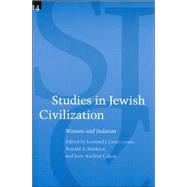|

Judaism a set of ideas about the world and
the way people should live is called "Judaism." Judaism has always accepted divorce as a fact of life it assumes that better
for a couple to divorce than to remain together in a state of constant bitterness. Under Jewish law, a man can divorce a woman
for any reason or no reason. The Talmud specifically says that a man can divorce a woman because she spoiled his dinner or
simply because he finds another woman more attractive, and womans consent to the divorce is not required. The position of
husband and wife as far as divorce is not equal. According to the Talmud, only the husband can initiate a divorce, and the
wife cannot prevent him from divorcing her though later rabbinical authorities interfered to each this ruggedness of the law
and prohibiting man to divorce without wifes consent. Relief to women was that she could marry another after divorce. Revolutionary
Jewish society changed many of the obstacles
BOOKS:
 The lives of Jewish women throughout the ages are illuminated and celebrated in this dynamic anthology, which features the
insights and research of historians, sociologists, artists, theologians, and philosophers. Jewish women in antiquity are examined
from several perspectives: D. W. Griffith's often-overlooked film masterpiece Judith of Bethulia; the "domestication" of Sarah from Hebrew scriptures
to Hellenistic Jewish renderings; "nice Jewish girls" like Ruth and Esther who used wine to achieve power; the portrayal of
Miriam in the Dead Sea Scrolls; and the impact of rabbinical decisions to exempt women from festive rituals. Later medieval
and early modern Jewish women are the subjects of chapters that examine women as prophets and visionaries in Judaism, the
depiction of Jewish women in anti-Semitic art caricature, and the history of intermarriage in the early twentieth century.
A discussion of the stories of Martin Buber, S. Y. Agnon, and I. L. Peretz highlights the experiences of modern Jewish women,
while a wide-ranging examination of current Jewish feminist scholarship finds the discipline "between a rock and a hard place."
Also of note are an investigation into the activity of traditional women's theatrical groups in Israel, the living memories
of American Jewish women via oral narratives, the contributions of women to American Reform Judaism, and two series of posters
from the Jewish Women's Archive of Boston, which provide insight into the lives of extraordinary Jewish women.
Tradition in a Rootless World: Women Turn to Orthodox Judaism:- The past two decades in the United States have seen an immense liberalization and expansion of women's roles in
society. Recently, however, some women have turned away from the myriad, complex choices presented by modern life and chosen
instead a Jewish orthodox tradition that sets strict and rigid guidelines for women to follow. Lynn Davidman followed the
conversion to Orthodoxy of a group of young, secular Jewish women to gain insight into their motives. Living first with a
Hasidic community in St. Paul, Minnesota, and then joining an Orthodox synagogue on the upper west side of Manhattan, Davidman
pieced together a picture of disparate lives and personal dilemmas. As a participant observer in their religious resocialization
and in interviews and conversations with over one hundred women, Davidman also sought a new perspective on the religious institutions
that reach out to these women and usher them into the community of Orthodox Judaism. Through vivid and detailed personal portraits,Tradition
in a Rootless Worldexplores women's place not only in religious institutions but in contemporary society as a whole. It is
a perceptive contribution that unites the study of religion, sociology, and women's studies.
WOMAN AND RELIGION
|



